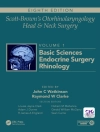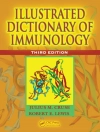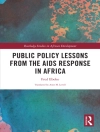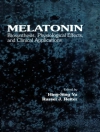Authored by “a superb clinician and award-winning teacher, ”* Near Misses in Pediatric Anesthesiology, Second Edition is a thorough updating and significant expansion of this popular case book in the newest anesthesiology subspecialty to be approved by the American Board of Medical Specialties.
The book comprises 87 true-story clinical “near misses, ” including 40 cases that are brand new. Recommendations, references, and discussion accompany each case. The cases provide an ideal basis for problem-centered learning and also model how to learn from experience and to maintain professionalism during the lifelong development of clinical expertise.
Dr. Brock-Utne’s latest case book provides a pediatric complement to his bestselling Case Studies of Near Misses in Clinical Anesthesia (Springer, 2012) and Clinical Anesthesia: Near Misses and Lessons Learned (Springer, 2008).
* Jay B. Brodsky, MD, from the Foreword.
قائمة المحتويات
1. Case 1: Upper Gastrointestinal Endoscopy under General Anesthesia.- 2. Case 2: Sudden Anesthesia System Failure.- 3. Case 3: Broviac Catheter Placement in a Neonatal Intensive Care Unit.- 4. Case 4: Occluded Reinforced (Armored) Endotracheal Tube.- 5. Case 5: The Too-Small Rigid Bronchoscope.- 6. Case 6: Anaphylaxis, Anaphylactoid Reaction, Or What Was It?.- 7. Case 7: Generalized Convulsions after Regional Anesthesia.- 8. Case 8: Hypotension during Microdiscectomy.- 9. Case 9: Intraoperative Hypotension in a Patient Receiving Chronic Steroids.- 10. Case 10: Changing a Nasotracheal Tube for an Oral Tube in the Intensive Care Unit.- 11. Case 11: Blocked Intravenous Line during Rapid-Sequence Induction.- 12. Case 12: Postinduction Difficult Intubation.- 13. Case 13: Blunt Upper Airway Trauma in a Patient with Recent Polysubstance Abuse.- 14. Case 14: The Stuck Elevator.- 15. Case 15: Postoperative Upper Airway Obstruction.- 16. Case 16: Postoperative Respiratory Complications in a Neonate.- 17. Case 17: Pregnant Teenager with a Bad Outcome.- 18. Case 18: Tension Pneumoperitoneum.- 19. Case 19: A Patient with Status Asthmaticus.- 20. Case 20: Intraoperative Decrease in Electrocardiogram Amplitude: Cause for Concern?.- 21. Case 21: Potential Disaster: An Intravenous Line That Stops Working in the Perioperative Phase.- 22. Case 22: Ventilatory Management in Major Thoracic Incisional Injury.- 23. Case 23: Airway Leak in a Prone Patient.- 24. Case 24: Difficulty in Extubation.- 25. Case 25: Tonsillectomy.- 26. Case 26: An Unusual Cause of a Serious Cardiac Arrhythmia.- 27. Case 27: A Patient with Supraglottic Mass.- 28. Case 28: Pressurized Intravenous Hetastarch.- 29. Case 29: Intraoperative Hypotension.- 30. Case 30: Hematuria.- 31. Case 31: Congenital Complete Heart Block.- 32. Case 32: Neonatal Respiratory Distress.- 33. Case 33: Respiratory Distress in the Intensive Care Unit.- 34. Case 34: The Butterfly Needle (Abbott).- 35. Case 35: Hypotension on Induction of Anesthesia in a Trauma Patient.- 36. Case 36: Delayed Postoperative Respiratory Obstruction.- 37. Case 37: An Abnormal Capnogram.- 38. Case 38: Retropharyngeal Abscess.- 39. Case 39: Rising End-Tidal Carbon Dioxide.- 40. Case 40: Acute Abdomen.- 41. Case 41: Difficulty in Ventilation in the Postinduction Period.- 42. Case 42: Unexplained Low Oxygen Saturation.- 43. Case 43: Occlusion of an Endotracheal Tube in a Neonate.- 44. Case 44: Surgical Emphysema after a Motor Vehicle Accident.- 45. Case 45: Postoperative Respiratory Arrest.- 46. Case 46: Rapid Increase in Body Temperature after Induction of General Anesthesia.- 47. Case 47: Intraoperative ‘Oozing’.- 48. Case 48: A Tip for Nasotracheal Intubation.- 49. Case 49: A Case of Anisocoria Following General Anesthesia.- 50. Case 50: A Routine Tonsil- and Adenoidectomy.- 51. Case 51: Drug Overdose.- 52. Case 52: Cardiac Arrest in a Neonate.- 53. Case 53: Bilateral Tourniquets. Beware.- 54. Case 54: Neurofibromatosis. A Warning.- 55. Case 55: A Machine Failure.- 56. Case 56: A Severe Case of Bronchospasm.- 57. Case 57: A Peanut in the Airway.- 58. Case 58: A Sprinkler Spike Lodged in a Patient’s Head.- 59. Case 59: Infusion of Cold Blood. Should We Worry?.- 60. Case 60: Respiratory Arrest after Extubation.- 61. Case 61: Sudden Increase in End-Tidal CO2.- 62. Case 62: A Case of Acute Lymphoblastic Leukemia (ALL).- 63. Case 63: Intraoperative Airway Obstruction.- 64. Case 64: An Anterior Mediastinal Mass. What Will You Do?.- 65. Case 65: A “Routine” MRI Case.- 66. Case 66: A Serious Problem during Neurosurgery.- 67. Case 67: A Case of Severe Intra-abdominal Pressure.- 68. Case 68: A Case of Severe Laryngospasm.- 69. Case 69: An ETT Suction Problem.- 70. Case 70: A Child Refusing an Operation.- 71. Case 71: Why So Sleepy?.- 72. Case 72: Check Your Facts.- 73. Case 73: A Strange Capnogram.- 74. Case 74: Relying on Others.- 75. Case 75: Monitored Anesthesia Care. Watch Out.- 76. Case 76: An Intermittently Worrisome Capnography Trace.- 77. Case 77: Cardiac Arrest at the Conclusion of Neurosurgery.- 78. Case 78: Watch Out.- 79. Case 79: A Complication of Central Venous Cannulation?.- 80. Case 80: An Example of Murphy’s Law.- 81. Case 81: A Tragic Case.- 82. Case 82: Hemoptysis from a 2-Month Tracheostomy.- 83. Case 83: A Potentially Serious Incident.- 84. Case 84: Rusty Material in an Oxygen Flow Meter.- 85. Case 85: A Surprising Solution to an Airway Emergency.- 86. Case 86: An Airway Leak in the ICU.- 87. Case 87: Pediatric Dental Anesthesia.












